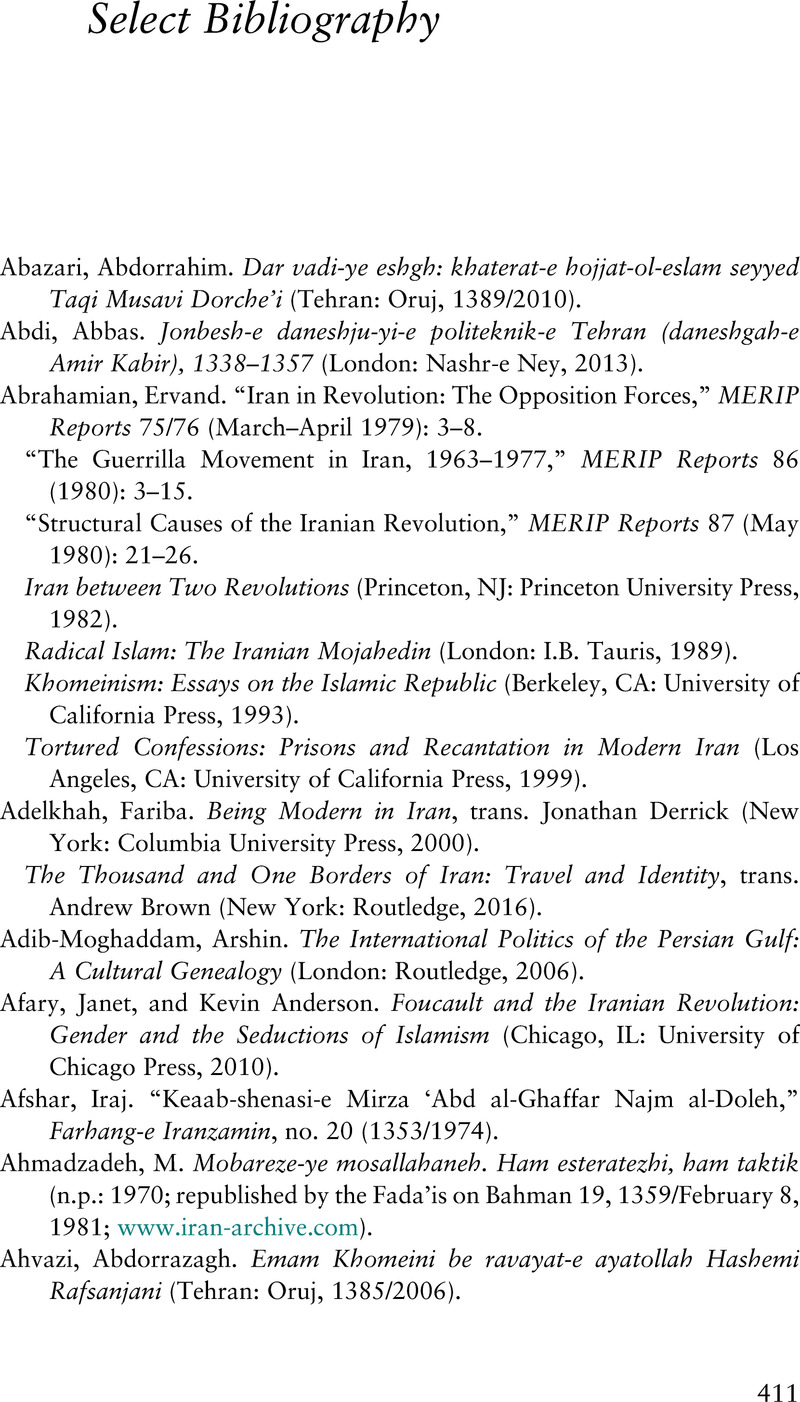Book contents
- Global 1979
- The Global Middle East
- Global 1979
- Copyright page
- Dedication
- Contents
- Figures
- Tables
- Contributors
- Acknowledgments
- Maps
- Orientations
- Part I Global Shadows
- Part II Militarized Cartographies
- Part III Hidden Genealogies
- Part IV Circulating Knowledge
- Part V Aspirational Universalisms
- Select Bibliography
- Index
- References
Select Bibliography
Published online by Cambridge University Press: 01 July 2021
- Global 1979
- The Global Middle East
- Global 1979
- Copyright page
- Dedication
- Contents
- Figures
- Tables
- Contributors
- Acknowledgments
- Maps
- Orientations
- Part I Global Shadows
- Part II Militarized Cartographies
- Part III Hidden Genealogies
- Part IV Circulating Knowledge
- Part V Aspirational Universalisms
- Select Bibliography
- Index
- References
Summary

- Type
- Chapter
- Information
- Global 1979Geographies and Histories of the Iranian Revolution, pp. 411 - 438Publisher: Cambridge University PressPrint publication year: 2021



